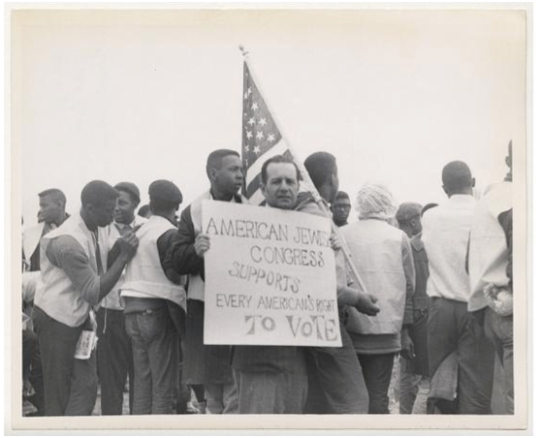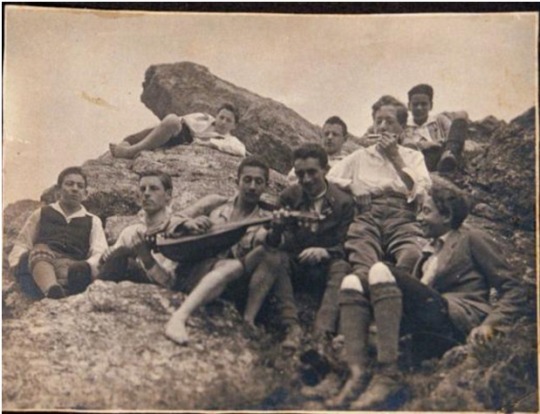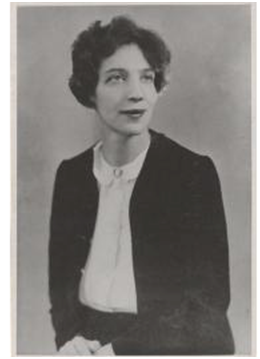By
Poorvi Bellur
Conducted
over the course of Black History Month 2017, this research project is
structured around primary sources from the archives and the personal
collections of each of these individuals and their correspondences with other
important leaders of the Civil Rights movement. This study focuses on the
umbrella organization of the American Jewish Congress and profiles 3 major
voices in the Jewish fight for Civil Rights: Shad Polier, Justine Wise Polier
and Will Maslow.
Introduction
“The
problem of the twentieth century is the problem of the color line”WEB Dubois
I am a current undergraduate student at
Columbia University in the City of New York studying postcolonial history and political
science. From January to April of this year, I worked as an intern at the
Center for Jewish History, as part of the Kenneth Cole Community Action
Program. Specifically focused on the region of the Middle East and South Asia,
I am interested in the imperial legacies in the postcolonial world order,
especially surrounding lines of race and caste. Recent coursework led me to
become interested in questions of American democracy and race, especially those
concerning minority interactions and systems of privilege in legislation. With
these topics in mind, I decided to dedicate my time at the Center to studying
the history of African American-Jewish relations, particularly during the
post-World War II Civil Rights Movement.

Members of the AJC holding up a sign at Montgomery March (American Jewish Historical Society, American Jewish Congress records, undated, 1916-2006, Call #I-77, Box 744, Folder 41)
This push against racism – punctuated by a
series of revolutionary legislative acts and public demonstrations – revealed
an extremely complex relationship between the black and Jewish communities,
united and divided at different times and by different degrees. This complexity is in part a legacy of the
history of black and Jewish interactions in the United States. Since even
before the Civil War period, groups of American Jews protested and openly
opposed the practice of slavery, and discrimination against African Americans.
Indeed, the Scottsboro case of 1931, one of the most high profile cases of
racial discrimination in the legal system, when nine African American teenagers
falsely accused of raping two white women on a train in Alabama and jailed,
with an all white jury condemning the group of young boys to death, Jewish
lawyer Samuel Leibowitz assumed the case without pay. He claimed to be inspired[1] by
the case of Leo Frank, a Jew in Georgia falsely accused for murder and lynched,
demonstrating the sympathy that many American Jews felt for the plight of black
Americans. However, other
groups, who sought assimilation in order to avoid provoking anti-Semitism,
denied such solidarity with the marginalized black community. The
archives of the Center’s partners house a plethora of sources revealing the
intricacies of these interactions and the impact they had on the movement at
large.

Members of the American Jewish Congress on the chartered bus on their way to March on Washington
(American Jewish Historical Society, American Jewish Congress records, undated, 1916-2006, Call #I-77, Box 743, Folder 26)
This study specifically focuses on the activities
of the umbrella organization, the American Jewish Congress – whose archives are
held by the American Jewish Historical Society (AJHS). I was particularly
interested in this organization because, as opposed to other Jewish social
activist collectives at the time which focused on more passive educational reform,
the AJC prioritized radical social legislative reform. Initially one of many
Zionist organization and led by Stephen S Wise, the AJC came to broaden its
scope and become the beacon for Jewish voices supporting legal reform in
America to combat systemic racism. Wise was also a founder of the NAACP and the
ACLU, and was known for his emphasis on the spirit of pluralism and under his
guidance the “AJCongress articulated the view that group, and not individual,
interests needed to be advanced through appropriate organizational channels and
not merely through a few well connected individuals”[2].
By 1945 the broadened focus of the
organization moved to strengthen American democracy through social legislation
reform and the Commission on Law and Social Action was set up to fight
discriminatory practices by big institutions and corporations alongside groups
like the NAACP and ACLU. What set the AJC apart from was that it over quiet
educational programs of other organizations such as the American Jewish
Committee. The AJC of the 1930’s onwards could be characterized as the social
rights lawyer of the American Jewish Community with its focus on First
Amendment cases and civil rights. Through three upcoming blog posts, I will
demonstrate the thrust of these activities through the lives of three of AJC’s
major figures – Shad Polier, Justine Polier and William Maslow. Conducted over
the course of Black History Month 2017, this research project is structured
around primary sources from the archives and the personal collections of each
of these individuals and their correspondences with other important leaders of
the Civil Rights movement.
[1] Norwood, Stephen H., and Eunice G. Pollack. Encyclopedia
of American Jewish history. Vol. 1. Santa Barbara, CA: ABC-CLIO, 2008.
Print.
[2] Jerome A Chanes-Norwood, Stephen H., and Eunice G.
Pollack. Encyclopedia of American Jewish history. Vol. 2. Santa Barbara, CA:
ABC-CLIO, 2008. Print.



